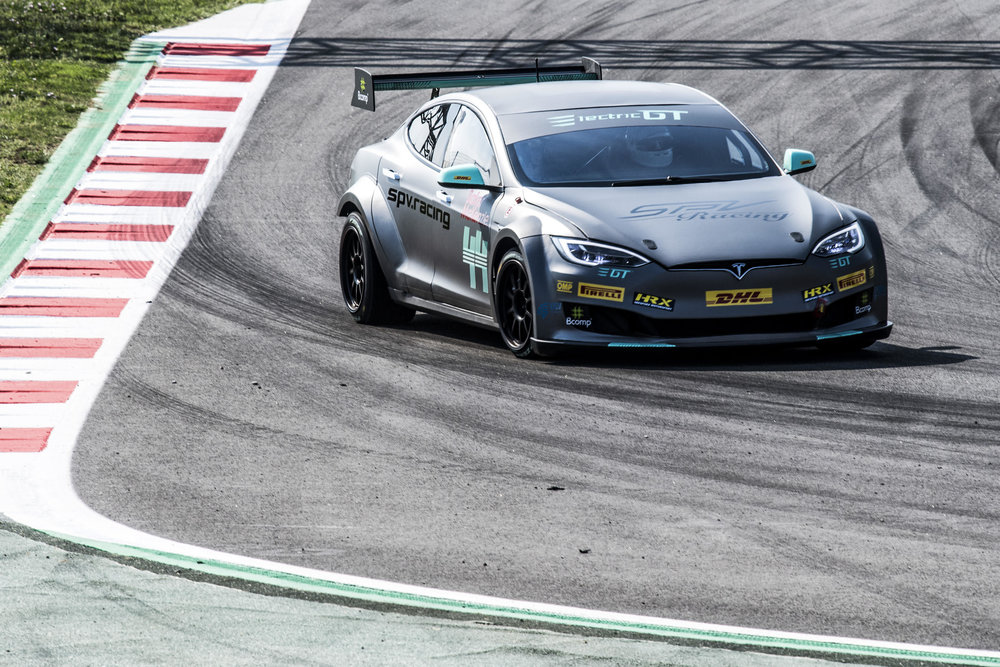
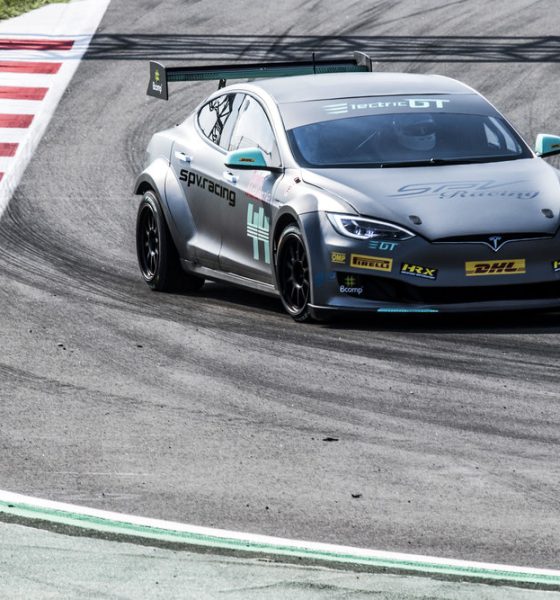
News
Tesla Model S P100DL racing series Electric GT hits another delay
Back in April, the Electric Production Car Series, better known as Electric GT, revealed an eight-round calendar for its inaugural season, which was expected to begin this November at Jerez, Spain. The organization later unveiled its first race-ready vehicle, a highly-modified Tesla Model S P100DL, that is optimized for the track. Unfortunately, recent updates from Electric GT indicates that the racing series would be delayed yet again.
Electric GT was originally expected to begin in 2017, but delays forced the organization to push back the debut of the all-electric, Tesla-exclusive racing series. This time around, EGT noted that it was delaying the launch of the series since it is still seeking a lead investor. In a statement to Autosport, EGT CEO Mark Gemmell stated that almost everything is ready — from the series’ racing categories, FIA approval, and technical and broadcast partners. With an investor in the picture, Gemmell noted that the racing series could begin as early as the first half of 2019.
“Accelerating development in both electric mobility and sustainable energy means ‘The Age of Light’ will fast be with us. The Age of Light is a vision that has driven us for over three years to build an Electric Production Car Series that excites and inspires, and it is now close to final launch. Almost everything is ready: we’ve developed three fantastic race categories, received FIA approval and welcomed new technical and broadcast partners.
“The final ingredient is confirming a great lead investor who shares our vision of clean energy and transport, which is fundamental to launching the championship at the highest level possible. The championship start date will be set once this lead investor has been confirmed. As any start-up, we adapt and test our strategy to make sure the timing is right and the market ready. In creating an engaging and inclusive championship, we want to be open with our fans and supporters as we close in on this final step to bring the racing we all want to see.”
Last July, Electric GT showcased its first track-optimized Tesla Model S P100DL, where it was test-driven by veteran auto host Tiff Needell, who drove the vehicle around the Circuit de Barcelona-Catalunya in Barcelona. Needell, a former racing driver and presenter for programs such as Top Gear and Fifth Gear, was largely impressed with the track-optimized Model S P100DL, as the vehicle was powerful and it remained planted on the road despite performing aggressive maneuvers on the racetrack.
Unfortunately, Needell’s track session was cut short when Electric GT’s race-modified Model S P100DL exhibited heating issues after one lap and a half of hard driving, forcing the former racecar driver to head over to the pits, where the P100DL had to be cooled down. A spokesperson from EGT later issued a statement about the incident, explaining that the heating issue was caused by one of the vehicle’s outdoor temperature sensors from the air conditioning system being disconnected.
The Tesla Model S P100DL is a monster on straight-line races, but its limitations on the track are well documented. Electric GT is aware of this, and it has developed a system that could address the vehicles’ heating issues. The organization plans to introduce a system that would allow drivers to manage how much of the vehicle’s power they wish to use. Thus, to avoid overheating, drivers could opt to drive with a more manageable 470 hp, and only unleash the Model S P100DL’s full 778 hp when sprinting or overtaking. The Electric GT spokesperson noted that for the inaugural season, at least, the system will be “part of the strategy and part of the show.”

News
Tesla earns top honors at MotorTrend’s SDV Innovator Awards
MotorTrend’s SDV Awards were presented during CES 2026 in Las Vegas.

Tesla emerged as one of the most recognized automakers at MotorTrend’s 2026 Software-Defined Vehicle (SDV) Innovator Awards.
As could be seen in a press release from the publication, two key Tesla employees were honored for their work on AI, autonomy, and vehicle software. MotorTrend’s SDV Awards were presented during CES 2026 in Las Vegas.
Tesla leaders and engineers recognized
The fourth annual SDV Innovator Awards celebrate pioneers and experts who are pushing the automotive industry deeper into software-driven development. Among the most notable honorees for this year was Ashok Elluswamy, Tesla’s Vice President of AI Software, who received a Pioneer Award for his role in advancing artificial intelligence and autonomy across the company’s vehicle lineup.
Tesla also secured recognition in the Expert category, with Lawson Fulton, a staff Autopilot machine learning engineer, honored for his contributions to Tesla’s driver-assistance and autonomous systems.
Tesla’s software-first strategy
While automakers like General Motors, Ford, and Rivian also received recognition, Tesla’s multiple awards stood out given the company’s outsized role in popularizing software-defined vehicles over the past decade. From frequent OTA updates to its data-driven approach to autonomy, Tesla has consistently treated vehicles as evolving software platforms rather than static products.
This has made Tesla’s vehicles very unique in their respective sectors, as they are arguably the only cars that objectively get better over time. This is especially true for vehicles that are loaded with the company’s Full Self-Driving system, which are getting progressively more intelligent and autonomous over time. The majority of Tesla’s updates to its vehicles are free as well, which is very much appreciated by customers worldwide.
Elon Musk
Judge clears path for Elon Musk’s OpenAI lawsuit to go before a jury
The decision maintains Musk’s claims that OpenAI’s shift toward a for-profit structure violated early assurances made to him as a co-founder.

A U.S. judge has ruled that Elon Musk’s lawsuit accusing OpenAI of abandoning its founding nonprofit mission can proceed to a jury trial.
The decision maintains Musk’s claims that OpenAI’s shift toward a for-profit structure violated early assurances made to him as a co-founder. These claims are directly opposed by OpenAI.
Judge says disputed facts warrant a trial
At a hearing in Oakland, U.S. District Judge Yvonne Gonzalez Rogers stated that there was “plenty of evidence” suggesting that OpenAI leaders had promised that the organization’s original nonprofit structure would be maintained. She ruled that those disputed facts should be evaluated by a jury at a trial in March rather than decided by the court at this stage, as noted in a Reuters report.
Musk helped co-found OpenAI in 2015 but left the organization in 2018. In his lawsuit, he argued that he contributed roughly $38 million, or about 60% of OpenAI’s early funding, based on assurances that the company would remain a nonprofit dedicated to the public benefit. He is seeking unspecified monetary damages tied to what he describes as “ill-gotten gains.”
OpenAI, however, has repeatedly rejected Musk’s allegations. The company has stated that Musk’s claims were baseless and part of a pattern of harassment.
Rivalries and Microsoft ties
The case unfolds against the backdrop of intensifying competition in generative artificial intelligence. Musk now runs xAI, whose Grok chatbot competes directly with OpenAI’s flagship ChatGPT. OpenAI has argued that Musk is a frustrated commercial rival who is simply attempting to slow down a market leader.
The lawsuit also names Microsoft as a defendant, citing its multibillion-dollar partnerships with OpenAI. Microsoft has urged the court to dismiss the claims against it, arguing there is no evidence it aided or abetted any alleged misconduct. Lawyers for OpenAI have also pushed for the case to be thrown out, claiming that Musk failed to show sufficient factual basis for claims such as fraud and breach of contract.
Judge Gonzalez Rogers, however, declined to end the case at this stage, noting that a jury would also need to consider whether Musk filed the lawsuit within the applicable statute of limitations. Still, the dispute between Elon Musk and OpenAI is now headed for a high-profile jury trial in the coming months.
News
Tesla Giga Shanghai celebrates 5 million electric drive unit milestone
The milestone was celebrated by the company in a post on its official Weibo account.
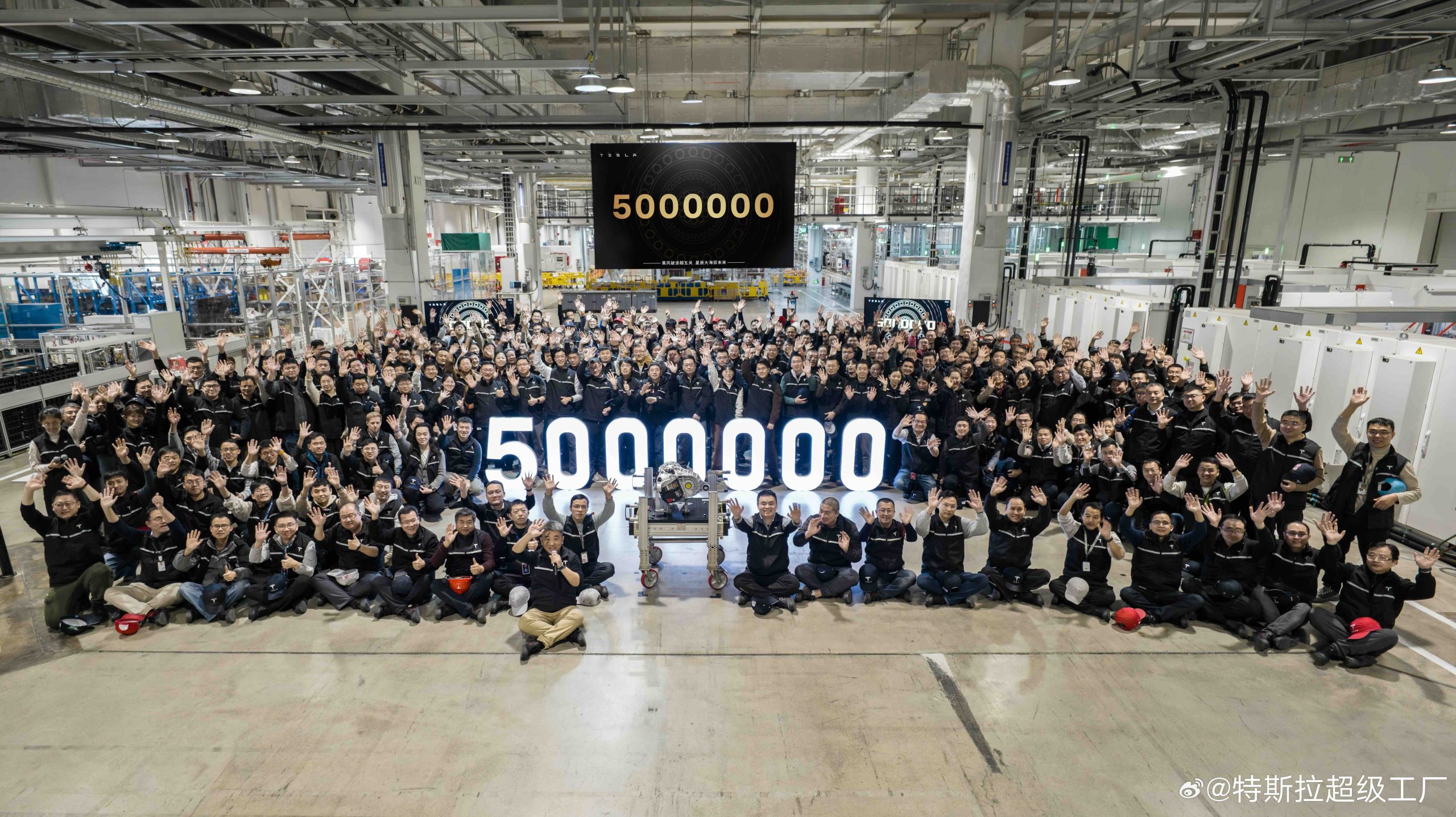
Tesla China has reached another manufacturing milestone at Gigafactory Shanghai, rolling out the facility’s 5 millionth locally produced drive unit.
The milestone was celebrated by the company in a post on its official Weibo account. In its post, the Giga Shanghai team could be seen posing with the 5 millionth drive unit.
Giga Shanghai’s major benchmark
The milestone drive unit was produced at Gigafactory Shanghai, which produces the Model Y and the Model 3. In a release, Tesla China noted that its three-in-one integrated electric drive system combines the motor, gearbox, and inverter into a single compact assembly. This forms a powerful “heart” for the company’s electric cars.
Tesla China also noted that its drive units’ integrated design improves energy conversion efficiency while reducing overall weight and complexity, benefits that translate into stronger performance, improved handling, and longer service life for its vehicles.
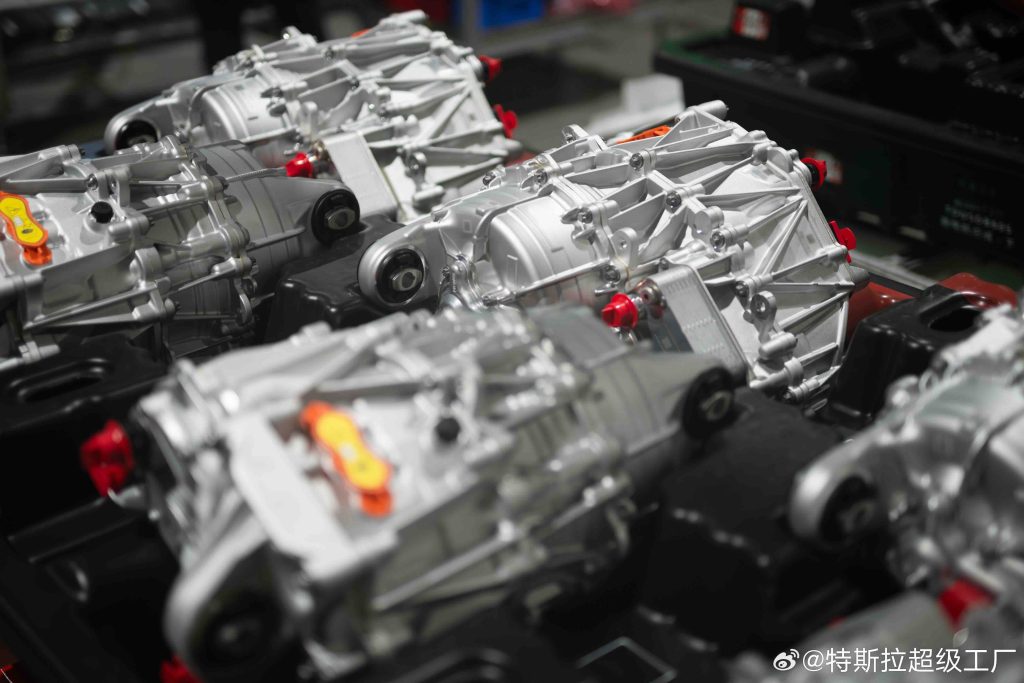
The new milestone builds on earlier achievements at the same site. In July 2024, Tesla announced that its 10 millionth electric drive system globally had rolled off the line at the Shanghai plant, making it the first self-produced Tesla component to reach that volume.
More recently, the factory also produced its 4 millionth China-made vehicle, a Model Y L. The factory has also continued hitting global production milestones, rolling out Tesla’s 9 millionth EV worldwide late last year, with the landmark vehicle being a Tesla Model Y.
Tesla China’s role
Construction of Giga Shanghai began in January 2019, with production starting by the end of that year. This made it the first wholly foreign-owned automotive manufacturing project in China. The facility began delivering Model 3 vehicles locally in early 2020 and added Model Y production in 2021. The plant is now capable of producing about 1 million vehicles annually.
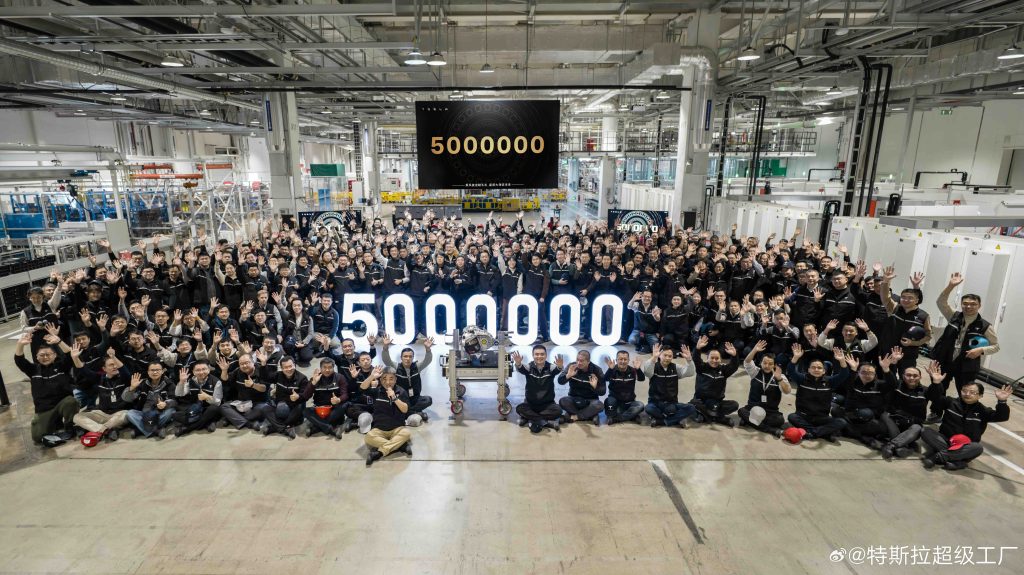
Throughout 2025, Giga Shanghai delivered 851,732 vehicles, representing a 7.08% year-on-year decline, according to data compiled by CNEVPost. Even so, recent months showed renewed momentum.
In December alone, Tesla China recorded wholesale sales of 97,171 vehicles, including domestic deliveries and exports, making it the company’s second-best monthly total on record, per data from the China Passenger Car Association. Retail sales during December reached roughly 94,000 units, up about 13% year over year.








